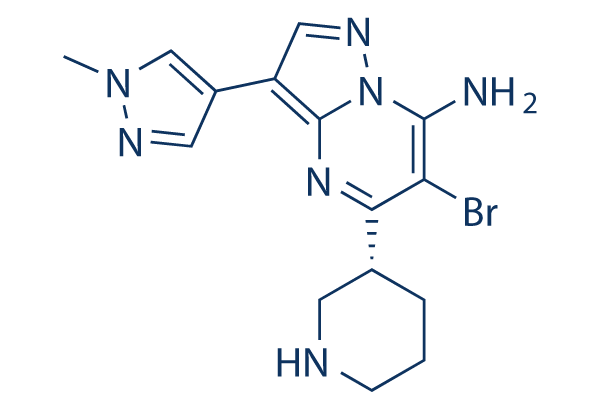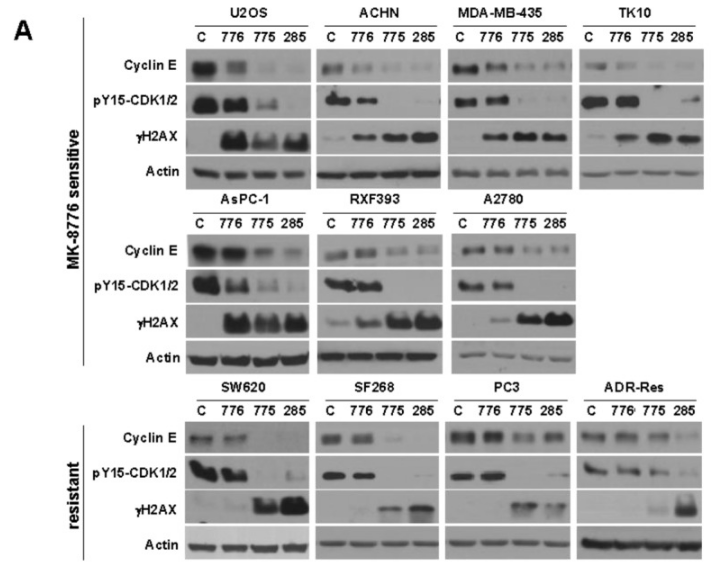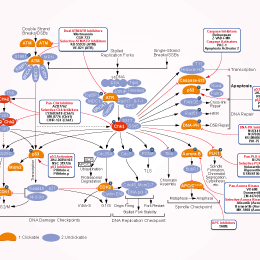
- Bioactive Compounds
- By Signaling Pathways
- PI3K/Akt/mTOR
- Epigenetics
- Methylation
- Immunology & Inflammation
- Protein Tyrosine Kinase
- Angiogenesis
- Apoptosis
- Autophagy
- ER stress & UPR
- JAK/STAT
- MAPK
- Cytoskeletal Signaling
- Cell Cycle
- TGF-beta/Smad
- DNA Damage/DNA Repair
- Compound Libraries
- Popular Compound Libraries
- Customize Library
- Clinical and FDA-approved Related
- Bioactive Compound Libraries
- Inhibitor Related
- Natural Product Related
- Metabolism Related
- Cell Death Related
- By Signaling Pathway
- By Disease
- Anti-infection and Antiviral Related
- Neuronal and Immunology Related
- Fragment and Covalent Related
- FDA-approved Drug Library
- FDA-approved & Passed Phase I Drug Library
- Preclinical/Clinical Compound Library
- Bioactive Compound Library-I
- Bioactive Compound Library-Ⅱ
- Kinase Inhibitor Library
- Express-Pick Library
- Natural Product Library
- Human Endogenous Metabolite Compound Library
- Alkaloid Compound LibraryNew
- Angiogenesis Related compound Library
- Anti-Aging Compound Library
- Anti-alzheimer Disease Compound Library
- Antibiotics compound Library
- Anti-cancer Compound Library
- Anti-cancer Compound Library-Ⅱ
- Anti-cancer Metabolism Compound Library
- Anti-Cardiovascular Disease Compound Library
- Anti-diabetic Compound Library
- Anti-infection Compound Library
- Antioxidant Compound Library
- Anti-parasitic Compound Library
- Antiviral Compound Library
- Apoptosis Compound Library
- Autophagy Compound Library
- Calcium Channel Blocker LibraryNew
- Cambridge Cancer Compound Library
- Carbohydrate Metabolism Compound LibraryNew
- Cell Cycle compound library
- CNS-Penetrant Compound Library
- Covalent Inhibitor Library
- Cytokine Inhibitor LibraryNew
- Cytoskeletal Signaling Pathway Compound Library
- DNA Damage/DNA Repair compound Library
- Drug-like Compound Library
- Endoplasmic Reticulum Stress Compound Library
- Epigenetics Compound Library
- Exosome Secretion Related Compound LibraryNew
- FDA-approved Anticancer Drug LibraryNew
- Ferroptosis Compound Library
- Flavonoid Compound Library
- Fragment Library
- Glutamine Metabolism Compound Library
- Glycolysis Compound Library
- GPCR Compound Library
- Gut Microbial Metabolite Library
- HIF-1 Signaling Pathway Compound Library
- Highly Selective Inhibitor Library
- Histone modification compound library
- HTS Library for Drug Discovery
- Human Hormone Related Compound LibraryNew
- Human Transcription Factor Compound LibraryNew
- Immunology/Inflammation Compound Library
- Inhibitor Library
- Ion Channel Ligand Library
- JAK/STAT compound library
- Lipid Metabolism Compound LibraryNew
- Macrocyclic Compound Library
- MAPK Inhibitor Library
- Medicine Food Homology Compound Library
- Metabolism Compound Library
- Methylation Compound Library
- Mouse Metabolite Compound LibraryNew
- Natural Organic Compound Library
- Neuronal Signaling Compound Library
- NF-κB Signaling Compound Library
- Nucleoside Analogue Library
- Obesity Compound Library
- Oxidative Stress Compound LibraryNew
- Plant Extract Library
- Phenotypic Screening Library
- PI3K/Akt Inhibitor Library
- Protease Inhibitor Library
- Protein-protein Interaction Inhibitor Library
- Pyroptosis Compound Library
- Small Molecule Immuno-Oncology Compound Library
- Mitochondria-Targeted Compound LibraryNew
- Stem Cell Differentiation Compound LibraryNew
- Stem Cell Signaling Compound Library
- Natural Phenol Compound LibraryNew
- Natural Terpenoid Compound LibraryNew
- TGF-beta/Smad compound library
- Traditional Chinese Medicine Library
- Tyrosine Kinase Inhibitor Library
- Ubiquitination Compound Library
-
Cherry Picking
You can personalize your library with chemicals from within Selleck's inventory. Build the right library for your research endeavors by choosing from compounds in all of our available libraries.
Please contact us at info@selleckchem.com to customize your library.
You could select:
- Antibodies
- Bioreagents
- qPCR
- 2x SYBR Green qPCR Master Mix
- 2x SYBR Green qPCR Master Mix(Low ROX)
- 2x SYBR Green qPCR Master Mix(High ROX)
- Protein Assay
- Protein A/G Magnetic Beads for IP
- Anti-Flag magnetic beads
- Anti-Flag Affinity Gel
- Anti-Myc magnetic beads
- Anti-HA magnetic beads
- Poly DYKDDDDK Tag Peptide lyophilized powder
- Protease Inhibitor Cocktail
- Protease Inhibitor Cocktail (EDTA-Free, 100X in DMSO)
- Phosphatase Inhibitor Cocktail (2 Tubes, 100X)
- Cell Biology
- Cell Counting Kit-8 (CCK-8)
- Animal Experiment
- Mouse Direct PCR Kit (For Genotyping)
- New Products
- Contact Us
research use only
MK-8776 (SCH 900776) Chk inhibitor
A selective Chk1 inhibitor with IC50 of 3 nM in a cell-free assay, MK-8776 (SCH 900776) shows 500-fold selectivity against Chk2. Phase 2.

Chemical Structure
Molecular Weight: 376.25
Purity & Quality Control
Batch:
Purity:
99.98%
99.98
Related Products
| Related Targets | Chk1 Chk2 | Click to Expand |
|---|---|---|
| Related Products | AZD7762 Rabusertib (LY2603618) CHIR-124 Prexasertib HCl (LY2606368) PF-477736 BML-277 (Chk2 Inhibitor II) Prexasertib (LY2606368) CCT245737 (SRA737) GDC-0575 | Click to Expand |
| Related Compound Libraries | Kinase Inhibitor Library PI3K/Akt Inhibitor Library MAPK Inhibitor Library DNA Damage/DNA Repair compound Library Cell Cycle compound library | Click to Expand |
Signaling Pathway
Cell Culture and Working Concentration
| Cell Lines | Assay Type | Concentration | Incubation Time | Formulation | Activity Description | PMID |
|---|---|---|---|---|---|---|
| SKOV3 | Growth Inhibition Assay | 0.3 µM | 8 d | sensitizes the cell lines to | 23548269 | |
| BxPC-3 | Growth Inhibition Assay | 10-1000 nM | 24-48h | enhances the chemosensitization to | 23804422 | |
| MiaPaCa-2 | Growth Inhibition Assay | 10-1000 nM | 24-48h | enhances the chemosensitization to | 23804422 | |
| AsPC-1 | Growth Inhibition Assay | 10-1000 nM | 24-48h | enhances the chemosensitization to | 23804422 | |
| H1299 | Growth Inhibition Assay | 500 nM | 24 h | DMSO | enhances the chemosensitization to PMX | 24113549 |
| H1993 | Growth Inhibition Assay | 500 nM | 24 h | DMSO | enhances the chemosensitization to PMX | 24113549 |
| H1437 | Growth Inhibition Assay | 500 nM | 24 h | DMSO | enhances the chemosensitization to PMX | 24113549 |
| H23 | Growth Inhibition Assay | 500 nM | 24 h | DMSO | enhances the chemosensitization to PMX | 24113549 |
| AsPC-1 | Growth Inhibition Assay | 200/2000 nM | 24 h | decreases the IC50 of | 24359526 | |
| TK10 | Growth Inhibition Assay | 200/2000 nM | 24 h | decreases the IC50 of | 24359526 | |
| A498 | Growth Inhibition Assay | 200/2000 nM | 24 h | decreases the IC50 of | 24359526 | |
| U20S | Growth Inhibition Assay | 200/2000 nM | 24 h | decreases the IC50 of | 24359526 | |
| SNB19 | Growth Inhibition Assay | 200/2000 nM | 24 h | decreases the IC50 of | 24359526 | |
| MDA-MB-435 | Growth Inhibition Assay | 200/2000 nM | 24 h | decreases the IC50 of | 24359526 | |
| U87 | Growth Inhibition Assay | 200/2000 nM | 24 h | decreases the IC50 of | 24359526 | |
| HCC2998 | Growth Inhibition Assay | 200/2000 nM | 24 h | decreases the IC50 of | 24359526 | |
| MDA-MB-231 | Growth Inhibition Assay | 200/2000 nM | 24 h | decreases the IC50 of | 24359526 | |
| MiaPaCa-2 | Growth Inhibition Assay | 200/2000 nM | 24 h | decreases the IC50 of | 24359526 | |
| MCF10A | Growth Inhibition Assay | 200/2000 nM | 24 h | decreases the IC50 of | 24359526 | |
| HCT116 | Growth Inhibition Assay | 200/2000 nM | 24 h | decreases the IC50 of | 24359526 | |
| IGROV-1 | Growth Inhibition Assay | 200/2000 nM | 24 h | decreases the IC50 of | 24359526 | |
| SW620 | Growth Inhibition Assay | 200/2000 nM | 24 h | decreases the IC50 of | 24359526 | |
| HCT115 | Growth Inhibition Assay | 200/2000 nM | 24 h | decreases the IC50 of | 24359526 | |
| U251 | Growth Inhibition Assay | 200/2000 nM | 24 h | decreases the IC50 of | 24359526 | |
| OVCAR-8 | Growth Inhibition Assay | 0.3 µM | 8 d | sensitizes the cell lines to | 23548269 | |
| MV-4-11 | Apoptosis Assay | 100-700 nM | 48 h | induces apoptosis dose dependently | 23536721 | |
| U937 | Apoptosis Assay | 100-700 nM | 48 h | induces apoptosis dose dependently | 23536721 | |
| MOLM-13 | Apoptosis Assay | 100-700 nM | 48 h | induces apoptosis dose dependently | 23536721 | |
| A2058 | Cell Viability Assay | 37.5-300 nM | 72 h | DMSO | reduces the MK-1775 EC50 by 5-fold to an average of 45 nM | 23148684 |
| H2009 | Cell Viability Assay | 500 nM | 72 h | DMSO | results in G1/S-phase accumulation combined with MK-1775 | 23148684 |
| Su.86.86 | Cell Viability Assay | 500 nM | 72 h | DMSO | results in G1/S-phase accumulation combined with MK-1775 | 23148684 |
| HRE | Cell Viability Assay | 500 nM | 72 h | DMSO | results in G1/S-phase accumulation combined with MK-1775 | 23148684 |
| HMEC | Cell Viability Assay | 500 nM | 72 h | DMSO | results in G1/S-phase accumulation combined with MK-1775 | 23148684 |
| U2OS | Function Assay | 2 µM | 0-24 h | induces phosphorylation of Chk1 at serine 345 at both concentrations as early as 2 h after administration | 22937147 | |
| U2OS | Growth Inhibition Assay | 0-10 µM | 24/48 h | inhibits cell growth dose dependently | 22937147 | |
| U937 | Function Assay | 100-500 nM | 4 h | decreases the cytarabine-induced Chk1 autophosphorylation at Ser296 and prevents Cdc25A downregulation | 22869869 | |
| U937 | Function Assay | 100 nM | 4 h | reverses the cytarabine-induced inhibition of 3H-thymidine incorporation into DNA | 22869869 | |
| U937 | Function Assay | 100-500 nM | 4 h | induces increased phosphorylation of H2AX | 22869869 | |
| HL-60 | Apoptosis Assay | 30/100/300 nM | 24 h | DMSO | enhances cytarabine-induced apoptosis | 22869869 |
| ML-1 | Apoptosis Assay | 25/50/100 nM | 24 h | DMSO | enhances cytarabine-induced apoptosis | 22869869 |
| HCT116 | Function Assay | 1 µM | 24 h | abrogates of cell cycle arrest | 22510560 | |
| U2OS | Function Assay | 1 µM | 24 h | abrogates of cell cycle arrest | 22510560 | |
| Sf9 | Function assay | Inhibition of recombinant CDK2/Cyclin A expressed in insect Sf9 cells assessed as inhibition of [33P]-ATP incorporation into biotinylated histone H1 after 1 hr by liquid scintillation counting, IC50 = 0.16 μM. | 21094607 | |||
| Click to View More Cell Line Experimental Data | ||||||
Mechanism of Action
| Targets |
|
|---|
In vitro |
||||
| In vitro | MK-8776 (SCH 900776) is a less potent inhibitor of Chk2 and CDK2 with IC50 of 1.5 μM and 0.16 μM, respectively. It shows no significant inhibition of cytochrome P450 human liver microsomal isoforms 1A2, 2C9, 2C19, 2D6, and 3A4. In combination with an antimetabolite, this compound induces accumulation of γ-H2AX within 2 hours, indicative of replication fork collapse and double stranded DNA breaks. Additionally, it suppresses accumulation of the Chk1 pS296 autophosphorylation in a dose-dependent manner. Exposure of proliferating WS1 cells to SCH 900776 is associated with rapid, dose-dependent accumulation of Chk1 pS345, indicating that cycling populations of normal cells induce Chk1 pS345 following exposure to it as part of a futile cycle, perhaps driven by AT-family kinases and DNA-PK.[1] |
|||
|---|---|---|---|---|
| Kinase Assay | Chk1 SPA assay | |||
| An in vitro assay utilizing recombinant His-Chk1 expressed in the baculovirus expression system as an enzyme source and biotinylated peptide based upon CDC25C as substrate. His-Chk1 is diluted to 32 nM in kinase buffer containing 50 mM Tris pH 8.0, 10 mM MgCl2, and 1 mM DTT. CDC25C (CDC25 Ser216 C-term biotinylated peptide) peptide is diluted to 1.93 μM in kinase buffer. For each kinase reaction, 20 μL of 32 nM Chk1 enzyme solution and 20 μL of 1.926 μM CDC25C are mixed and combined with 10 μL of MK-8776 (SCH 900776) diluted in 10% DMSO, making final reaction concentrations of 6.2 nM Chk1, 385 nM CDC25C and 1% DMSO after addition of start solution. The reaction is started by addition of 50 μL of start solution consisting of 2 μM ATP and 0.2 μCi of 33P-ATP, making a final reaction concentration of 1 μM ATP, with 0.2 μCi of 33P-ATP per reaction. Kinase reactions run for 2 hours at room temperature and are stopped by the addition of 100 μL of stop solution consisting of 2 M NaCl, 1% H3PO4, and 5 mg/mL Streptavidin-coated SPA beads. SPA beads are captured using a 96-well GF/B filter plate and a Filtermate universal harvester. Beads are washed twice with 2 M NaCl and twice with 2 M NaCl with 1% phosphoric acid. Signal is then assayed using a TopCount 96-well liquid scintillation counter. Dose-response curves are generated from duplicate 8 point serial dilutions of this compound. IC50 values are derived by nonlinear regression analysis. | ||||
| Cell Research | Cell lines | mESCs | ||
| Concentrations | 10 μM | |||
| Incubation Time | 1 h | |||
| Method | Cells were treated with MK-8776 (SCH 900776), other inhibitors, or vehicle for 1 hour. | |||
| Experimental Result Images | Methods | Biomarkers | Images | PMID |
| Western blot | Cyclin E / pY15-CDK / γH2AX p-chk1(ser345) / CDC25A |

|
26595527 | |
In Vivo |
||
| In vivo | Dose escalation of MK-8776 (SCH 900776) (16 mg/kg and 32 mg/kg) induces incremental improvements in tumor response. Importantly, doses of this compound that associate with robust biomarker activation and improved tumor response are not associated with enhanced toxicity on hematological parameters in BALB/c mice. [1] |
|
|---|---|---|
| Animal Research | Animal Models | Female nude mice injected subcutaneously with A2780 or MiaPaCa2 cells |
| Dosages | ~50 mg/kg | |
| Administration | Administered intraperitoneally | |
| NCT Number | Recruitment | Conditions | Sponsor/Collaborators | Start Date | Phases |
|---|---|---|---|---|---|
| NCT00779584 | Completed | Hodgkin Disease|Lymphoma Non-Hodgkin|Neoplasms |
Merck Sharp & Dohme LLC |
October 17 2008 | Phase 1 |
References |
|
Chemical Information
| Molecular Weight | 376.25 | Formula | C15H18BrN7 |
| CAS No. | 891494-63-6 | SDF | Download SDF |
| Synonyms | N/A | ||
| Smiles | CN1C=C(C=N1)C2=C3N=C(C(=C(N3N=C2)N)Br)C4CCCNC4 | ||
Storage and Stability
| Storage (From the date of receipt) | |||
|
In vitro |
DMSO : 75 mg/mL ( (199.33 mM) Moisture-absorbing DMSO reduces solubility. Please use fresh DMSO.) Water : Insoluble Ethanol : Insoluble |
Molecular Weight Calculator |
|
In vivo Add solvents to the product individually and in order. |
In vivo Formulation Calculator |
|||||
Preparing Stock Solutions
Molarity Calculator
In vivo Formulation Calculator (Clear solution)
Step 1: Enter information below (Recommended: An additional animal making an allowance for loss during the experiment)
mg/kg
g
μL
Step 2: Enter the in vivo formulation (This is only the calculator, not formulation. Please contact us first if there is no in vivo formulation at the solubility Section.)
% DMSO
%
% Tween 80
% ddH2O
%DMSO
%
Calculation results:
Working concentration: mg/ml;
Method for preparing DMSO master liquid: mg drug pre-dissolved in μL DMSO ( Master liquid concentration mg/mL, Please contact us first if the concentration exceeds the DMSO solubility of the batch of drug. )
Method for preparing in vivo formulation: Take μL DMSO master liquid, next addμL PEG300, mix and clarify, next addμL Tween 80, mix and clarify, next add μL ddH2O, mix and clarify.
Method for preparing in vivo formulation: Take μL DMSO master liquid, next add μL Corn oil, mix and clarify.
Note: 1. Please make sure the liquid is clear before adding the next solvent.
2. Be sure to add the solvent(s) in order. You must ensure that the solution obtained, in the previous addition, is a clear solution before proceeding to add the next solvent. Physical methods such
as vortex, ultrasound or hot water bath can be used to aid dissolving.
Tech Support
Answers to questions you may have can be found in the inhibitor handling instructions. Topics include how to prepare stock solutions, how to store inhibitors, and issues that need special attention for cell-based assays and animal experiments.
Tel: +1-832-582-8158 Ext:3
If you have any other enquiries, please leave a message.
* Indicates a Required Field
Frequently Asked Questions
Question 1:
I would like to know whether your product S2735 is the optically pure R enantiomer or whether it is a racemic mix.
Answer:
Our S2735 MK-8776 (SCH 900776) is R enantiomer.






































